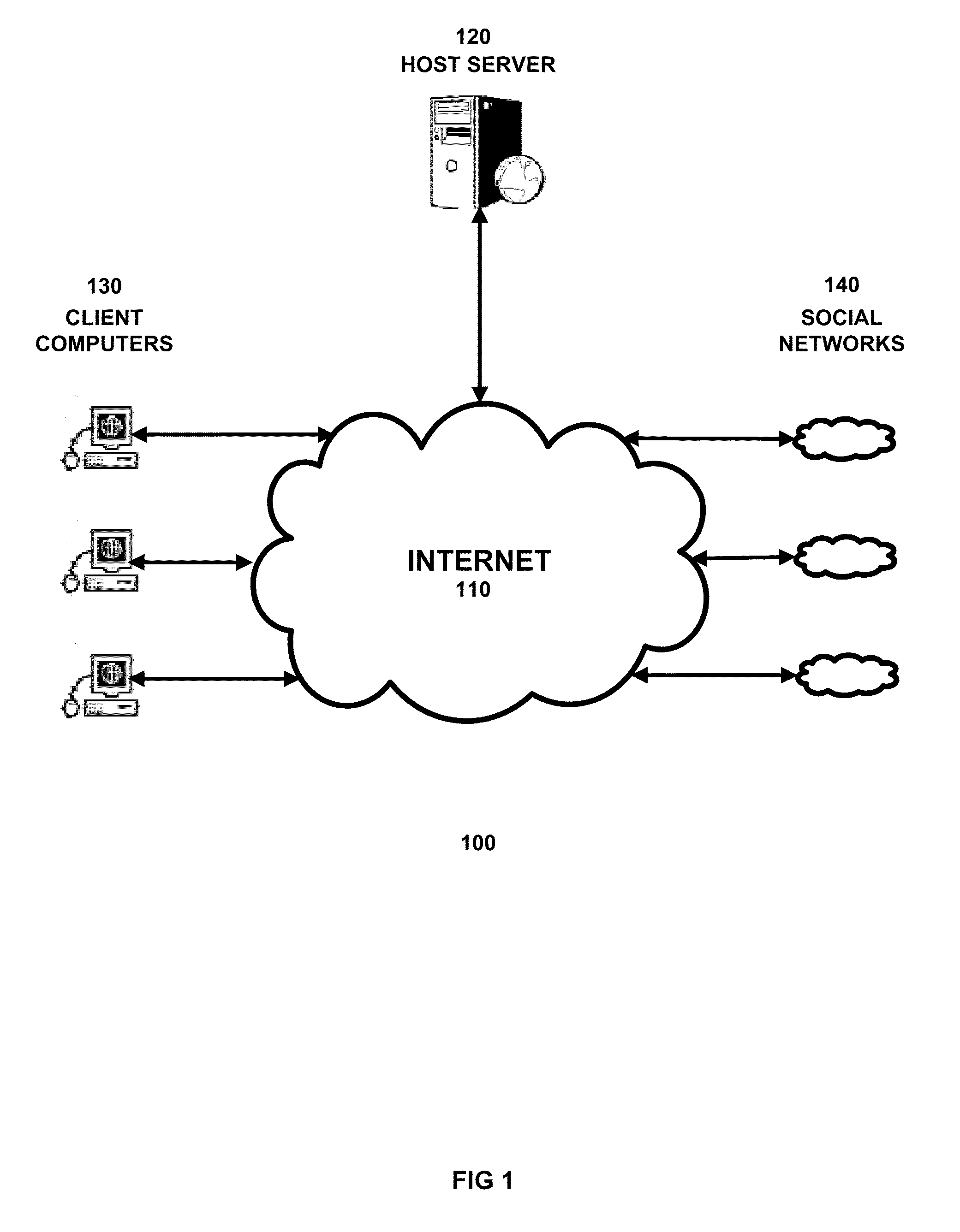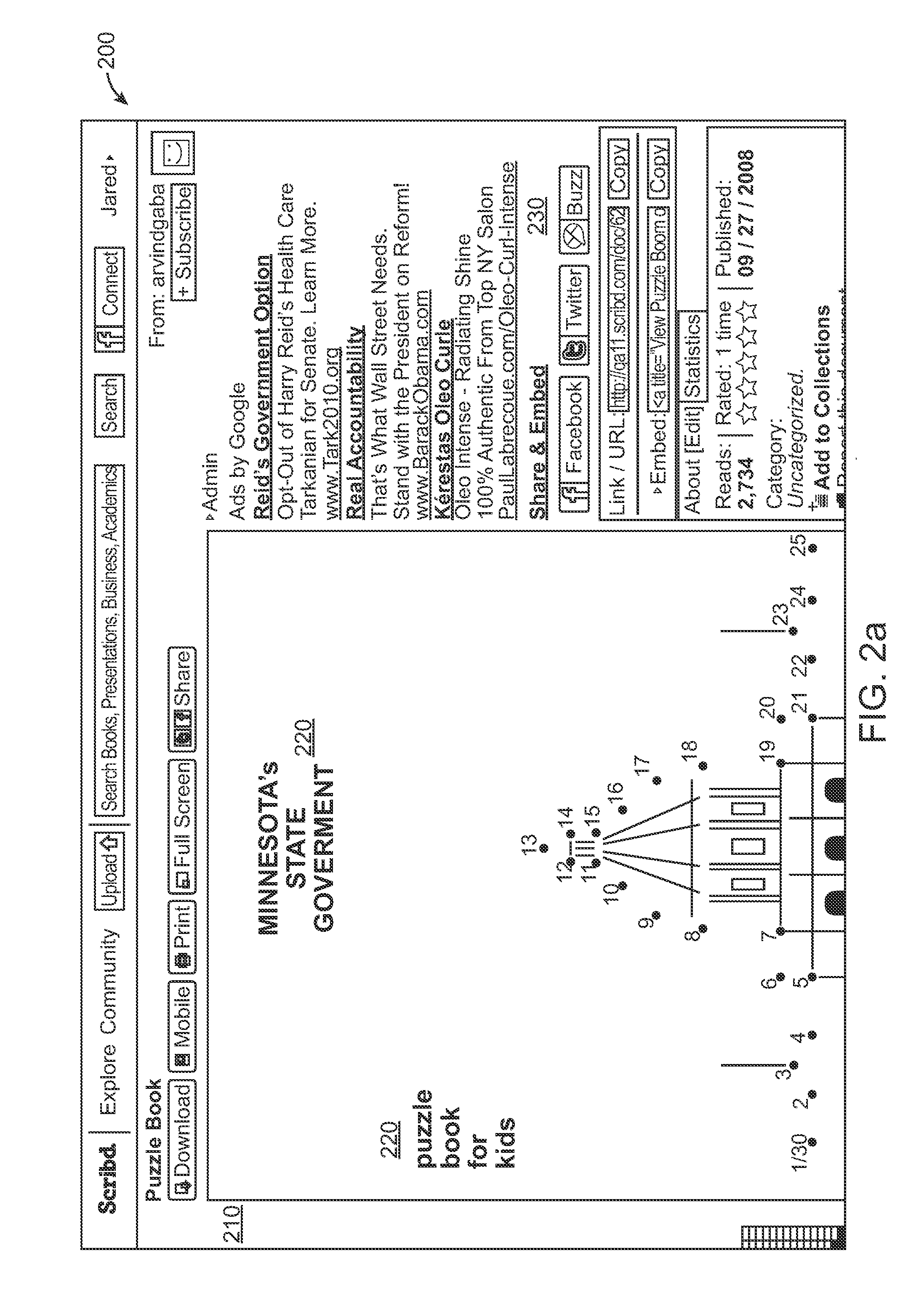Integrated document viewer with automatic sharing of reading-related activities across external social networks
a document viewer and social network technology, applied in the field of document viewer with automatic sharing of reading-related activities across external social networks, can solve the problems of limited text in documents displayed on the computer screen, virtually impossible to distinguish the appearance of a document created as a web page (html) from that of a more traditional page-oriented document, etc., to achieve the effect of increasing the “ad inventory” and increasing the ad inventory
- Summary
- Abstract
- Description
- Claims
- Application Information
AI Technical Summary
Benefits of technology
Problems solved by technology
Method used
Image
Examples
Embodiment Construction
[0045]A. Integrated Document Viewer
[0046]In one embodiment 100 of the present invention, illustrated in FIG. 1, the Internet 110 is the platform on which a set of documents (e.g., PDF documents, not shown) is shared between a host server 120, one or more client computers 130 and various members of social networks 140, some of whom are users of client computers 130. In this embodiment, Host server 130 converts the original documents into HTML (in accordance with the HTML 5.0 and CSS 3 specifications), employing the @font-face tag to download the original web fonts embedded in the documents, and integrates the document into the desired layout of a web page.
[0047]In this manner, the appearance of each document within the web page is preserved (as in the original document), including fonts and other page layout attributes. As will be illustrated below, the text remains searchable and the document can be viewed and controlled via standard web browser controls (without the need for any do...
PUM
 Login to View More
Login to View More Abstract
Description
Claims
Application Information
 Login to View More
Login to View More - R&D
- Intellectual Property
- Life Sciences
- Materials
- Tech Scout
- Unparalleled Data Quality
- Higher Quality Content
- 60% Fewer Hallucinations
Browse by: Latest US Patents, China's latest patents, Technical Efficacy Thesaurus, Application Domain, Technology Topic, Popular Technical Reports.
© 2025 PatSnap. All rights reserved.Legal|Privacy policy|Modern Slavery Act Transparency Statement|Sitemap|About US| Contact US: help@patsnap.com



